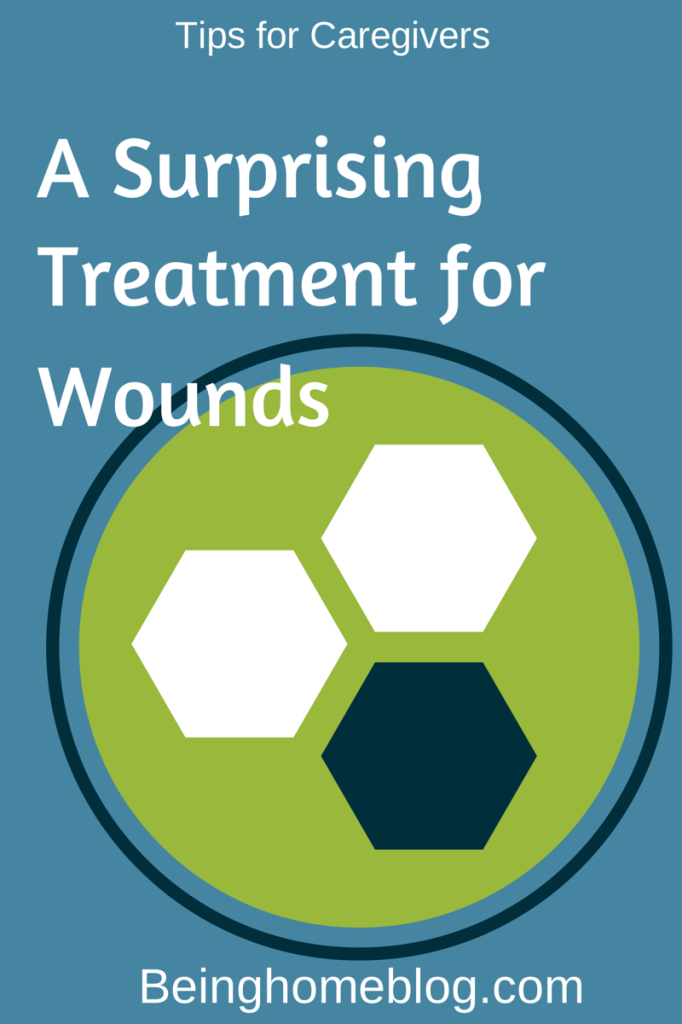
I’ve been caring for my 78-year-old aunt in my home since early May. Since she isn’t bed-ridden and gets out of bed once or twice through the night, I didn’t anticipate caring for open wounds so soon.
Although my aunt’s a diabetic and in spite of being unable to properly wash her feet for an extended period of time, she didn’t suffer from leg or foot sores before she came to live with me (that we know of) .
She developed dermatitis on her left leg shortly after she came here and an ulcer appeared on her left calf shortly after that. She may have picked up a staph infection at the nursing home where she stayed for three weeks before she came to live with me. Not sure. I treated the sore with polysporin and dressings at first, which I did for a week or so. It wasn’t getting better or worse.
When she ended up in the hospital for a stomach virus, they sent her home with wound care supplies, including a substance called “Medi Honey” to treat the wound.
I read some information and reviews about it and by all accounts, it comes highly recommended by wound care specialists. According to her doctor, it minimizes the risk of infection and keeps the wound moist, encouraging new skin growth.
The discharge nurse at the hospital suggested that the dressing should be changed every 3 days (woo-hoo!). Depending on the form of “medihoney”, though (paste, pads, gel), dressing changes will vary.
The stuff looks just like honey and largely consists of it. It’s FDA-approved for all stages of wound treatment.
I learned that I was probably putting the stuff on too large an area and it was likely breaking down the healthy skin around the wound. I adjusted my method and it definitely helped. I’m still waiting for the wound to disappear but it has steadily improved over the weeks.
I learned that it’s available without a prescription and is relatively affordable if you just want to try it, especially if you’ve been dealing with a persistent wound at home. I ordered a tube of the paste to see if it had different results than the strips that the hospital gave me. I found out that the dressings needed to be changed more frequently (daily) which is fine but I can’t tell whether there’s a difference in their effectiveness.
Compared to the terrifying leg ulcers I saw on the internet, my aunt’s sore is relatively manageable and small. I don’t have before/after photos because, well, they’re gross. I do wish I had taken photos for my own use but overall, the sore has improved. It’s more shallow, the new skin looks healthy and it hasn’t increased in diameter.
If you’ve been dealing with a persistent wound or ulcer and haven’t tried medihoney, you might have some success. If so, please let me know.
*Please note, this post contains affiliate links which means if you purchase a product through one of the links, I’ll receive a small commission at no additional cost to you.
*Disclaimer: The information in this post is about my experience using medihoney. Your results may be different.



